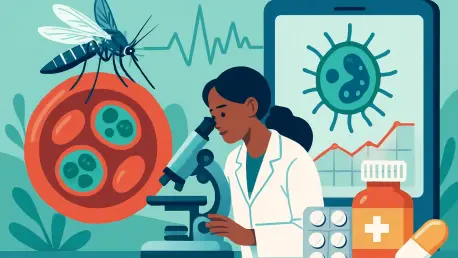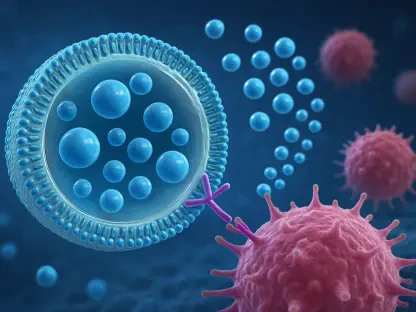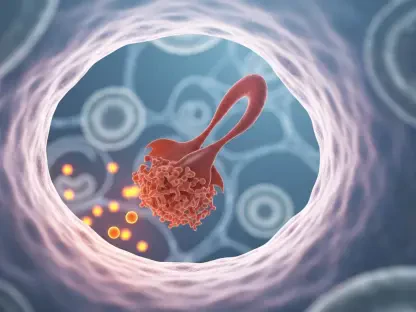Today, we’re thrilled to sit down with Ivan Kairatov, a biopharma expert with extensive experience in research and development, and a deep understanding of technological innovation in the industry. Ivan has been closely following the groundbreaking advancements in malaria treatment, including the recent developments surrounding Novartis’ new antimalarial drug, GanLum. In this conversation, we’ll explore the significance of this novel therapy, its potential to address critical challenges like drug resistance, and what it could mean for the future of global health.
Can you give us an overview of what GanLum is and why it’s being hailed as a major breakthrough in malaria treatment?
Absolutely. GanLum is a new antimalarial drug developed by Novartis, combining a novel compound called ganaplacide with a reformulated version of lumefantrine. What makes it a big deal is that it’s the first truly new kind of malaria treatment in over 20 years. It’s shown impressive results in clinical trials, with cure rates as high as 99% in some analyses, and it tackles two huge issues: drug-resistant parasites and disease transmission. This could be a game-changer for millions of people, especially in regions where current treatments are losing effectiveness.
What sets GanLum apart from the standard malaria treatments that have been in use for decades?
The key difference lies in how GanLum works at a molecular level. Unlike artemisinin-based therapies, which have been the gold standard since the late 1990s, GanLum targets a protein transport system that malaria parasites rely on to survive inside red blood cells. This mechanism allows it to attack a wide range of parasite strains, including those resistant to current drugs. It’s not just a tweak to an existing formula—it’s a fresh approach, which is why there’s so much excitement around it.
Can you walk us through the Phase 3 trial for GanLum and what made its results so promising?
Sure. The Phase 3 trial was a massive effort, involving 1,688 adults and children across 34 sites in 12 countries, primarily in sub-Saharan Africa. Participants were given either GanLum once daily for three days or the standard artemisinin-based treatment. The goal was to see if GanLum could match or exceed the effectiveness of current therapies, and it did. It achieved a cure rate of up to 99% after 28 days, compared to 94% for standard care, and met the World Health Organization’s efficacy target of 95%. These results show it’s not just comparable but potentially better in some respects.
Drug resistance is a growing concern in malaria treatment. How does GanLum address this challenge?
Drug resistance, especially to artemisinins, is a serious problem, particularly in parts of Africa where we’re seeing parasites that no longer respond well to standard treatments. GanLum’s ability to work against these resistant strains is a major step forward. Its unique mechanism—disrupting how parasites function inside blood cells—means it can target even the mutant strains that evade older drugs. For patients and doctors, this could mean a reliable option when other treatments fail, which is critical in high-burden areas.
Another exciting aspect of GanLum is its ability to block disease transmission. Can you explain how that works and why it matters?
Absolutely. GanLum interferes with the malaria parasite at a stage in its life cycle when it can be transmitted from humans back to mosquitoes, which is how the disease spreads. By attacking the parasite at this point, the drug reduces the chance of it being passed on through a mosquito bite. This is huge for communities because it doesn’t just treat the individual—it helps break the cycle of transmission, potentially lowering infection rates in entire regions over time.
Safety is always a top concern with new drugs. What can you tell us about GanLum’s safety profile based on the trial data?
From what’s been shared, GanLum’s safety profile looks comparable to standard treatments, which is encouraging. The trial didn’t highlight any major red flags or unexpected side effects, though specific details are still limited. This similarity to existing therapies suggests that it could be integrated into treatment protocols without significant new risks, but of course, ongoing monitoring will be key as it moves toward wider use.
Novartis is pushing to get GanLum approved quickly. Can you shed some light on what that regulatory process might look like?
The approval process will likely involve submitting detailed trial data to major regulatory bodies, such as the European Medicines Agency, the U.S. Food and Drug Administration, and authorities in malaria-endemic regions, often in collaboration with the World Health Organization. The goal is to demonstrate that GanLum is safe, effective, and necessary, given the public health need. While exact timelines aren’t public, the urgency around drug resistance suggests they’ll aim for a fast-tracked review, potentially getting it to patients within a couple of years if all goes smoothly.
Looking ahead, what’s your forecast for the impact of GanLum on global malaria control efforts?
I’m cautiously optimistic. If GanLum gets approved and is rolled out effectively, it could significantly shift the landscape of malaria control, especially in areas hardest hit by resistance. Its dual ability to treat infections and curb transmission could lower case numbers in ways we haven’t seen with current drugs. However, success will depend on access—ensuring it’s affordable and reaches remote communities. Combined with other tools like vaccines and prevention strategies, GanLum could be a cornerstone in the fight to reduce malaria’s global burden.









